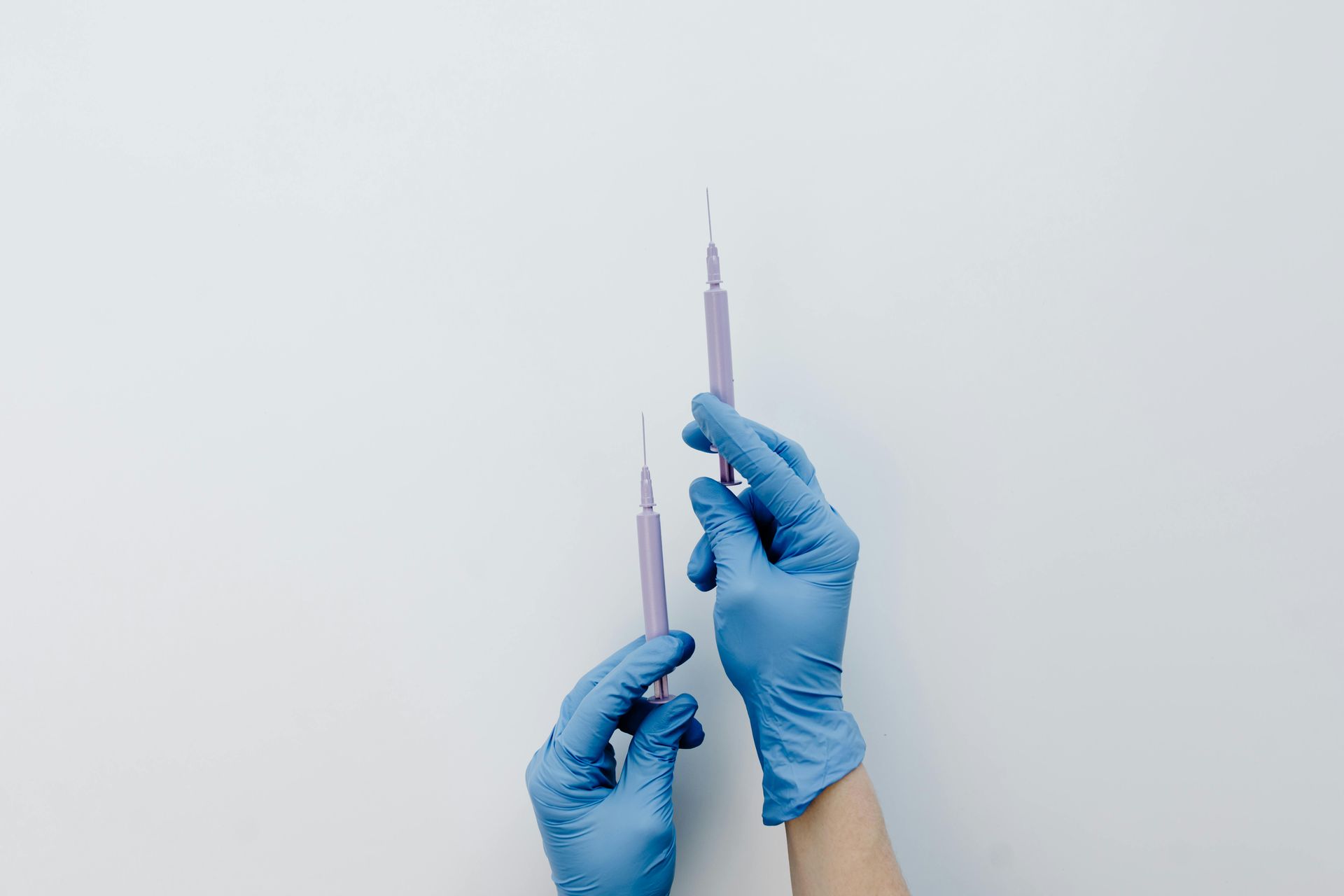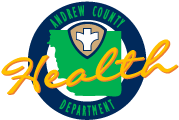Andrew County Plan for Response and Recovery to COVID-19
Andrew County Health Department continues to monitor the ongoing COVID-19 pandemic and collaborates with local government officials in the response and recovery planning for Andrew County.
Over the past week, case counts in Missouri have continued to steadily climb and many rural areas have become affected. Current case counts can be found at https://health.mo.gov.
This framework of response and recovery for Andrew County was built on the guidance of the Whitehouse, CDC, and Missouri DHSS on the reopening of our corresponding entities.
There are several recommended components that assist with continuing to slow the spread:
- Maintain Physical Distancing
- Increase Testing Capacity and Rapid Results
- Ensure Functioning of the Health Care System
- Increase Supply of Personal Protective Equipment
- Implement Comprehensive COVID-19 Surveillance Systems
- Massively Scale Contact Tracing and Isolation and Quarantine
- Offer Voluntary Local Isolation and Quarantine
- Encourage the Public to Wear Masks
Maintain Physical/Social Distancing
- Social Distancing orders were enacted by local leadership, generally through a collaborative effort between the local public health department and city/county officials. While similar, all vary to some degree.
- Missouri Governor Parson issued a statewide Stay at Home order on April 3, 2020. The stay-at-home orders limit communities to only have business deemed essential to operate, residents to stay at home except for the provision of essential services, and all community interactions to adopt appropriate social distancing strategies. The current order will remain in effect until 11:59 pm, Sunday, May 3, 2020.
- While all existing orders will expire, maintaining social distancing will remain a key public health intervention throughout recovery phases. Public information and education shall continue regarding the need for social distancing.
Increasing Testing Capacity and Rapid Test Results
- Local providers testing capacity has increased in recent weeks. All local entities have testing systems in place to include, Missouri Department of Health Laboratory, private laboratory, and point of care testing.
- The reporting of test results has continually become more rapid.
- Locally we will continue to work towards emerging antibody testing capabilities.
Ensure Functioning of the Healthcare System
- Healthcare has taken preventive measures to reduce the risk of infection through several actions. Hospitals have placed increasingly more stringent visitor restrictions, reduced, or eliminated elective procedures, increasing bed capacity in response to COVID-19, worked to increase PPE supply for the demand, implemented staff monitoring protocol, and more. These measures have helped ensure the system is functioning currently, as well as how the system will function with a surge of patients.
- Additionally, the healthcare systems across the region have assessed their surge capabilities. Surge strategies for in-house surge are being developed. Emergency Management staff across the region have been engaged with hospitals to consider local support that may be needed by a surging in demands.
Increase the Supply of Personal Protective Equipment (PPE)
- The CDC has issued guidance for the use of PPE, to include the use of a mask (N95 or surgical mask), eye protection, gown, and gloves. The supply for these items was quickly depleted and resulted in delayed provisions of supplies to entities in need.
- The Missouri Department of Health and Senior Services (DHSS) and the Missouri State Emergency Management Agency (SEMA) are continuing to work to get additional PPE for healthcare, first responders and long-term care facilities. The current understanding is that PPE availability is low but stable for healthcare and first responders, but some long-term care facilities had experienced shortages previously.
Implement Comprehensive COVID-19 Surveillance Systems
- Disease surveillance, which is a key element of combating any infectious disease, is best facilitated by community testing, diagnosis, and epidemiology. Creating streamlined testing locations, with sufficient tests and rapid results are core elements to effective testing. With the anticipated increase of testing availability and 1-3-day processing, sufficient testing for the current need can remain in place, unless the spread of disease exceeds the capacity of either testing or public health epidemiology services.
Massively Scale Contact Tracing and Isolation and Quarantine
- Local public health agencies have increased capacity for conducting epidemiological services for COVID-19 cases, through current communicable disease staff and reassigned staff to assist with this process.
- Additionally, processes have been streamlined across the region, creating a standard approach, for which local public health agencies can support each other in the event a hot spot is identified.
Offer Voluntary Local Isolation and Quarantine
- Local Public Health Agencies work closely with identified positive COVID-19 cases to ensure voluntary self-isolation measures are in place. Contact tracing and voluntary self-quarantine measures for close contact individuals have also been implemented. Isolation and quarantine are key public health interventions that will continue through all phases.
Public Use of Face Masks
- The CDC has issued guidance regarding the general public wearing cloth face coverings. This guidance is a personal decision for each community member to make, not a mandate. It is important that public health messages continue to stress the importance of social distancing, hand hygiene and individuals staying home when they are sick. As already stated, the market supply of masks is extremely low. Homemade masks are available from a number of community sources for the general public.
Guidelines for all Phases:
In accordance with the White House Task Force, and Missouri Department of Health, the following guidelines shall be maintained through all phases of the recovery.
Individuals: continue to follow state and local guidance, as well as CDC guidance.
- Wash your hands often with soap and water. Use hand sanitizer as an alternative. Wash your hands after touching frequently used items or surfaces.
- Avoid touching your face.
- Sneeze or cough into a tissue, throw the tissue away and wash your hands. Sneeze or cough into your elbow if you do not have a tissue available.
- Disinfect frequently touched surfaces and items often, using a household cleaner. Read the label for effective cleaning. Surfaces include doorknobs, light switches, computer mouse or keyboard, faucets, kitchen and bathroom knobs, remotes, and others.
- Consider wearing a face covering in public, where you cannot maintain 6 feet social distancing measures
- People who are sick shall stay home. Do not go to work, school, daycare, or any public setting. Contact your medial provider for assessment.
Employers: continue to follow state and local guidance, as well as CDC guidance.
- In accordance with federal, state, and local regulations and laws and industry best practices, develop and implement policies for:
- Social distancing
- Use of personal protective equipment
- Sanitation
- Use of and disinfection of common and high traffic areas
- Business travel
- Monitor workforce for symptoms, including temperature checks where appropriate. Do not allow symptomatic individuals to return to work until 72 hours symptom free.
- Working with the local public health agency, develop procedures for workforce contact tracing following an employee with a positive COVID-19 test.
- Develop cleaning protocol for the environment, following an employee with a positive COVID-19 test.
Businesses: continue to follow state and local guidance, as well as CDC guidelines
- Assure that all customers are practicing social distancing and adequate hygiene practices while in respective business.
- Implement practices to reduce the risk of COVID-19 for customers.
Phase Specific Guidelines:
Phase 1
Individual Measures
Vulnerable/High Risk individuals shall continue to shelter in place. Members of households with vulnerable residents should be aware that by returning to work or an environment where distancing is not practical there is the potential to carry the virus back home. Precautions shall be taken to isolate from vulnerable residents.
All individuals, when in public, shall maximize physical distance from others of at least 6 ft.
Non-essential visits to senior living facilities shall be limited and in accordance with individual facility protocols and guidelines. Those who do interact with residents and patients must adhere to strict protocols regarding hygiene and social distancing when adequate.
Avoid socializing in groups of more than 10 people in circumstances that do not readily allow for appropriate physical distancing.
Minimize non-essential travel and adhere to CDC guidelines regarding isolation following travel.
Community Measures
Schools shall remained closed.
Organized youth activities shall remain delayed.
Parks may be open but playground equipment shall remain closed and social distancing of 6 ft. shall be maintained.
Individual sports such as golf, running, cycling, etc. can remain open and accessible under approved guidelines where appropriate. In addition no groups of 10 or more and social distancing of 6 ft. shall be maintained.
Group sports such as tennis, basketball, football, soccer, baseball, frisbee golf, etc. shall remain closed due to the risk of close contact and shared equipment.
Public Swimming areas shall remain closed.
Any mass gatherings shall adhere to social distancing of 6 ft. and if unable to maintain this should not occur.
Business Measures
All Businesses shall adhere to the following:
- Assure that all people remain separated by physical space of at least six (6) ft. In the event social distancing of 6 ft. is unable to be maintained due to specific job duties and services alternative protective measures for both employee and customer, including but not limited to face coverings for the nose and mouth, shall be provided.
- Businesses should continue to encourage telework, whenever possible and feasible with business operations.
- Close common areas where personnel are likely to congregate and interact or enforce strict social distancing protocols.
- Minimize non-essential travel and adhere to CDC guidelines regarding isolation following travel.
- Strongly consider special accommodations for personnel who are members of vulnerable populations.
- Non-essential visits to senior living facilities shall be limited and in accordance with individual facility protocols and guidelines. Those who do interact with residents and patients must adhere to strict protocols regarding hygiene and social distancing when adequate.
Essential Businesses shall continue to conduct business in accordance with the following:
- Continue operations based on the state occupancy formula issued in the Missouri Stay at Home Order issued April 27, 2020 to take effect May 4, 2020. https://health.mo.gov/living/healthcondiseases/communicable/novel-coronavirus/pdf/economic-reopening.pdf
- Restaurants, Bars, and Food Establishments may resume indoor dining with implementation of the following regulations
- Limit customer access to self-serve options such as salad bars, buffets, and beverages.
- Utilize disposable menus or adhere to strict sanitation of menus between customers.
- Employee use of personal protective equipment if available.
- Tables and seating shall be spaced out according to social distancing of 6 ft., no communal seating of parties that are not connected shall occur.
- No parties seated in groups of more than 10 people.
- Continued use of drive-thru, pickup or delivery options is strongly encouraged.
- Gas stations and Convenience stores: No more than ten (10) people including employees, vendors, and customers may be on the retail sales floor at any one time. All persons shall maintain 6 foot separation.
- Facilities with indoor dining areas may operate that area under the same guidance of restaurants, bars, and food establishments.
Non-Essential Business shall conduct business in accordance with the following:
- Shall maintain a 5:1 ratio of customers to employees within the business. Social Distancing of 6 ft. shall be maintained at all times.
- Businesses with shared equipment/supplies shall adhere to strict sanitation guidelines.
Phase 2 (Tentatively to Begin May 18, 2020)
Individual Measures
- Vulnerable/High Risk individuals shall continue to shelter in place. Members of households with vulnerable residents should be aware that by returning to work or an environment where distancing is not practical there is the potential to carry the virus back home. Precautions shall be taken to isolate from vulnerable residents.
- All individuals, when in public, shall maximize physical distance from others of at least 6 ft.
- Non-essential visits to senior living facilities shall be limited and in accordance with individual facility protocols and guidelines. Those who do interact with residents and patients must adhere to strict protocols regarding hygiene and social distancing when adequate.
- Minimize non-essential travel outside of your own community, if appropriate follow CDC isolation guidelines following travel to areas of concern.
Community Measures
Organized youth activities may resume practice with strict social distancing of at least 6 ft. and proper disinfection of shared equipment.
Playground equipment may be utilized with proper disinfection by community members before and after use while maintaining 6 ft. social distancing.
Practice for group sports may resume with strict social distancing of 6 ft. and proper disinfection of shared equipment.
Public Swimming areas may operate under approved guidelines from facility and public health guidance.
Any mass gatherings shall adhere to social distancing of 6 ft. and if unable to maintain this should not occur.
Business Measures
All Businesses shall adhere to the following:
- Assure that all people remain separated by physical space of at least six (6) ft. In the event social distancing of 6 ft. is unable to be maintained due to specific job duties and services alternative protective measures for both employee and customer, including but not limited to face coverings for the nose and mouth, shall be provided.
- Businesses should continue to encourage telework, whenever possible and feasible with business operations.
- Close common areas where personnel are likely to congregate and interact or enforce strict social distancing protocols.
- Minimize non-essential travel outside of our local communities and adhere to CDC guidelines regarding isolation following travel when appropriate.
- Strongly consider special accommodations for personnel who are members of vulnerable populations.
- Non-essential visits to senior living facilities shall be limited and in accordance with individual facility protocols and guidelines. Those who do interact with residents and patients must adhere to strict protocols regarding hygiene and social distancing when adequate.
Essential Businesses shall continue to conduct business in accordance with the following:
- Continue operations based on the state occupancy formula issued in the Missouri Stay at Home Order issued April 27, 2020 to take effect May 4, 2020. https://health.mo.gov/living/healthcondiseases/communicable/novel-coronavirus/pdf/economic-reopening.pdf
- Restaurants, Bars, and Food Establishments may resume indoor dining with implementation of the following regulations
- Limit customer access to self-serve options such as salad bars, buffets, and beverages
- Utilize disposable menus or adhere to strict sanitation of menus between customers.
- Employee use of personal protective equipment if available.
- Tables and seating shall be spaced out according to social distancing of 6 ft., no communal seating of parties that are not connected shall occur.
- No parties seated in groups of more than 10 people.
- Continued use of drive-thru, pickup or delivery options is strongly encouraged.
- Gas stations and Convenience stores: No more than ten (10) people including employees, vendors, and customers may be on the retail sales floor at any one time. All persons shall maintain 6 foot separation.
- Facilities with indoor dining areas may operate that area under the same guidance of restaurants, bars, and food establishments.
Non-Essential Businesses shall conduct business in accordance with the following:
- Shall operate following the Essential Business occupancy formula as issued by the State. Social Distancing of 6 ft. shall be maintained at all times. https://health.mo.gov/living/healthcondiseases/communicable/novel-coronavirus/pdf/economic-reopening.pdf
- Businesses with shared equipment/supplies shall adhere to strict sanitation guidelines.
As of Monday June 1, 2020 at 1201 AM this document shall be considered completed unless otherwise stated. At that time Andrew County will proceed with following further guidance as issued by the State of Missouri.






